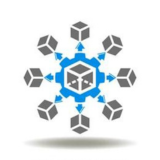Robotic Process Automation(RPA)
INTRODUTION
Robotic Process Automation (RPA) is a technology that uses software robots (or bots) to automate repetitive, rule-based tasks typically performed by humans within business processe
Key Concepts
Software Robots
RPA software robots mimic human actions by interacting with user interfaces of applications, manipulating data, and executing tasks just like a human user would. These robots can perform tasks across multiple applications without the need for integration.
Rule-Based Tasks
RPA is best suited for automating tasks that are repetitive, rule-based, and require minimal human judgment. Examples include data entry, form filling, report generation, data extraction, and invoice processing.
User Interface Automation
RPA interacts with the user interface of applications through techniques like screen scraping, mouse clicks, keyboard inputs, and data entry. This enables bots to work across different systems without requiring changes to underlying software.
Components of Robotic Process Automation
Advantages of Robotic Process Automation
Increased Productivity
RPA automates repetitive tasks, allowing employees to focus on higher-value activities that require human creativity, problem-solving, and decision-making.
Scalability
RPA enables organizations to scale automation efforts rapidly to handle growing volumes of work without increasing headcount, enabling business growth and expansion.
Accuracy and Consistency
RPA bots perform tasks with high accuracy and consistency, eliminating errors and reducing the need for manual intervention and rework.
Cost Savings
RPA reduces labor costs associated with manual data entry, processing, and validation, leading to significant cost savings for organizations over time.







